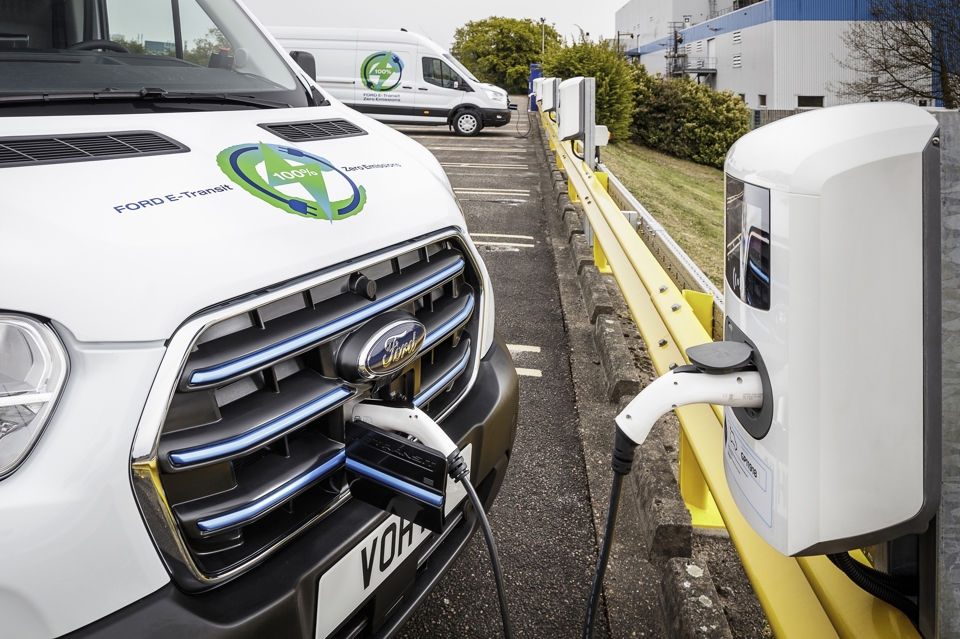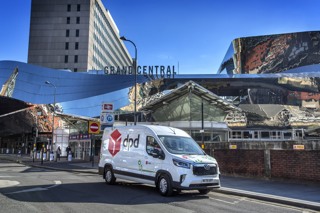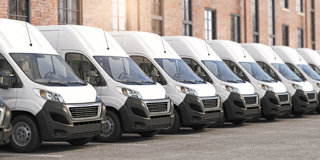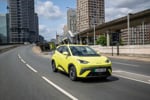The purchase price of an electric van is the biggest barrier to its adoption, according to new research published by the Department for Transport (DfT).
It shows that more than a third (38%) of van operators say electric vehicle (EV) pricing is the number one roadblock to making the switch.
A further 30% of respondents to the DfT survey said the size, range and capacity of ultra-low emission vehicles (ULEVs) were not suitable for their needs.
The findings come after the Government decided to cut the plug-in van grant and changed the eligibility criteria.
Plug-in van customers had been eligible for a 20% reduction on the vehicle purchase price, up to a maximum of £8,000. However, the DfT announced in March that the plug-in van grant would, with immediate effect, equate to 35% of the purchase price for small vans, up to a maximum of £3,000 and 20% of the purchase price for a large van, up to a maximum of £6,000.
There was surprise from many in the fleet industry that ministers had decided to apply cuts to both the plug-in car and van grants, instead of maintaining, or increasing, the funding for electric light commercial vehicles (eLCVs), particularly when they form such a small percentage of the vans operated in Britain.
DIESEL’S DOMINATION
Newly released DfT data shows that nearly all vans are powered by diesel (97%). Of the ‘other’ fuel types (not petrol or diesel), battery electric was the most common fuel.
The proportion of vans classed as ultra-low emission vehicles (ULEVs) emitting less than 75g/km of CO2, was just 0.3%.
The proportion of vans classed as ULEVs also varied by region, according to the DfT data. London had the highest proportion at 0.6%, which accounted for 12% of ultra-low emission vans in Great Britain, but only 5% of all vans.
The West Midlands had the second highest proportion (0.4%) and accounted for 16% of all ultra-low emission vans operated, compared with 11% of all vans. Wales had the smallest proportion at 0.1%, accounting for 3%, compared with 5% of all vans.
The number of ultra-low emission vans being adopted is increasing, however, with new plug-in van registrations, which qualified for the grant, hitting 5,863 last year. In 2012, when the plug-in van grant was introduced (the car grant was launched in 2011), just 259 electric vans were registered.
Last year’s total was a 73% increase on the 3,389 plug-in van registrations which were eligible for the grant in 2019. It means 14,700-plus plug-in vans have benefitted from the grant since launch.
That is put in perspective, however, when more than 270,000 plug-in cars have qualified for the grant over a similar timeframe.
ELECTRIC VAN PERFORMANCE
For those ultra-low emission vans which have been registered, the DfT survey of almost 20,000 van operators suggests their most common primary usage is ‘carrying equipment, tools or materials’ (59%) followed by ‘delivery/collection of goods’ (24%) and ‘private/domestic’ use (16%) – broadly similar to primary usage of all van types.
However, the average annual mileage of ultra-low emission vans operated by fleets was less than half of that covered by internal combustion engine (ICE) counterparts.
The ultra-low emission vans, which are typically plug-in vehicles, had an estimated average annual mileage of 7,700, compared with 17,500 for ICE vans.
Arval believes that understanding the realistic operational capabilities of an eLCV is “crucial” to an effective electric fleet transition process. David Watts, Arval UK senior consultant, said: “Two key questions routinely faced from fleet operators looking to adopt eLCVs are ‘what is the realworld range?’ and ‘what impact, if any, does the payload have on this range?’.”
According to new research from Arval, fleet operators should expect electric vans to achieve 60-70% of their claimed range in real-world use.
The study, conducted at Millbrook Proving Ground, Bedford, tested electric vans in each size segment with a variety of different payloads.
Watts continued: “Fleets will want to use this new data to see what their typical operations will mean for EV range.
“However, there are some reassuring points that can be taken on board – namely, figures for laden eLCVs are comparable with the performance of diesel vans, faster speeds don’t necessarily reduce range and using ‘worst case’ winter performance figures should see a positive impact in warmer months.”
COMPARING JOURNEY PROFILES
The DfT survey shows that for both ultra-low emission and ICE vans, the most common travel pattern was a single calling point in a day followed by returning to base, but this was less frequent for ULEVs (41%) than non-ULEVs (64%).
Overall, it was more common for ULEVs to have multiple stops during a typical day, at 59% compared with around a third (36%) of ICE vans.
ULEVs were also more likely to return to base multiple times a day (35% vs 19%), whether returning after each stop or routinely returning after multiple stops.
Not only were ULEVs more likely to make multiple stops a day, on average they made more than three times the number of stops per day when compared with ICE vans (25 and eight stops on average per day respectively).
The DfT suspects this may be because almost a quarter (24%) of these vans’ primary use was ‘delivery/collection of goods’ compared with 16% of ICE vans.
DPD, for example, is already operating some 750 electric vehicles (EVs) in the UK out of a fleet of 7,000-plus vehicles and is aiming to deliver to 25 of the largest towns and cities with zero and low-emission vehicles by 2025. It also aims to double its fleet of EVs after ordering 750 pure electric commercial vehicles from Maxus.
Meanwhile, operating 5,000- plus vehicles on its Tesco.com delivery fleet, Tesco is aiming to fully electrify the fleet by 2028 as part of a commitment to reach ‘net zero’ by 2035.
> Looking for electric van data? Check out our tool www.fleetnews.co.uk/electric-fleet/electric-car-and-van-data
























Login to comment
Comments
No comments have been made yet.